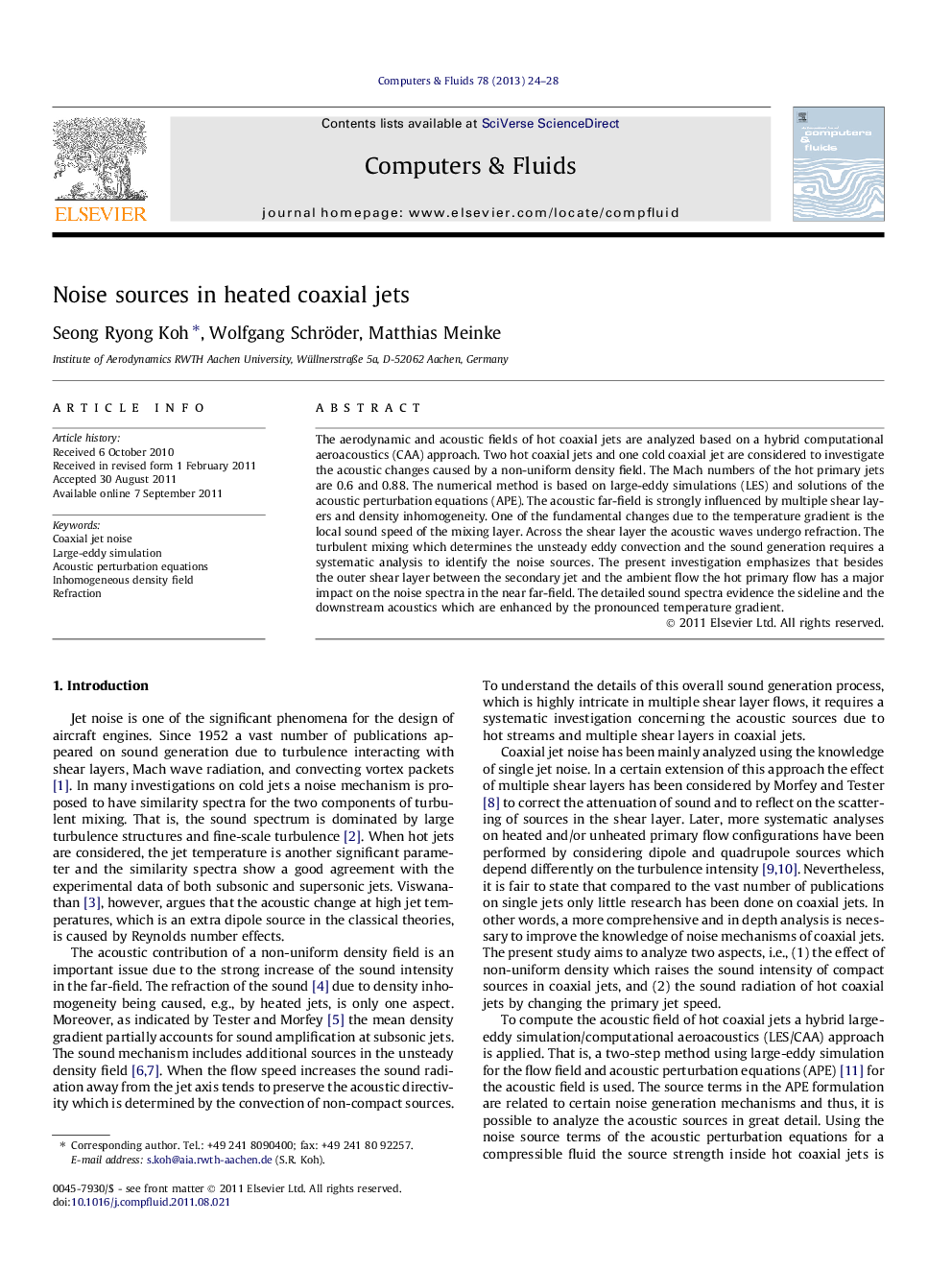| Article ID | Journal | Published Year | Pages | File Type |
|---|---|---|---|---|
| 756645 | Computers & Fluids | 2013 | 5 Pages |
The aerodynamic and acoustic fields of hot coaxial jets are analyzed based on a hybrid computational aeroacoustics (CAA) approach. Two hot coaxial jets and one cold coaxial jet are considered to investigate the acoustic changes caused by a non-uniform density field. The Mach numbers of the hot primary jets are 0.6 and 0.88. The numerical method is based on large-eddy simulations (LES) and solutions of the acoustic perturbation equations (APE). The acoustic far-field is strongly influenced by multiple shear layers and density inhomogeneity. One of the fundamental changes due to the temperature gradient is the local sound speed of the mixing layer. Across the shear layer the acoustic waves undergo refraction. The turbulent mixing which determines the unsteady eddy convection and the sound generation requires a systematic analysis to identify the noise sources. The present investigation emphasizes that besides the outer shear layer between the secondary jet and the ambient flow the hot primary flow has a major impact on the noise spectra in the near far-field. The detailed sound spectra evidence the sideline and the downstream acoustics which are enhanced by the pronounced temperature gradient.
► The sound radiation of coaxial jets is analyzed by using a hybrid LES/CAA method. ► The strong temperature gradient enhances the turbulent mixing at the potential core. ► The heat-excited acoustic source increases the low-frequency side-line acoustics. ► The high-speed large-scale turbulence intensifies the downstream acoustic radiation.
